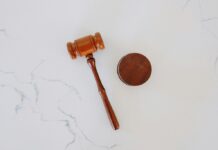Accidents on unsafe properties often result in injuries and can quickly lead to legal disputes over responsibility. A premises liability lawyer helps clarify how liability is determined when someone gets hurt on hazardous property. In Sacramento, California, understanding these legal principles is especially important for those seeking justice after an injury and for property owners who must uphold their duty to maintain safe environments. Liability hinges on whether the property owner was negligent in addressing known dangers and the legal status of the injured person, such as whether they were guests or trespassers.
California law places different duties on owners depending on the visitor’s classification and the nature of the hazard. Knowing how these factors interact can considerably affect a claim’s outcome. This article will guide you through the essential aspects of liability on unsafe premises in Sacramento and help you recognize when legal action is appropriate and how to protect your rights or defend against claims.
Defining Unsafe Premises
Unsafe premises are where one person is at risk of being harmed by another when they enter a building (or property). Such hazards may include wet surfaces, broken stairs, and bad lighting. Hazardous conditions increase the risk of accidents. All property owners have a responsibility to keep their premises safe. Otherwise, they can be liable for any injuries that occur.
The Role of Negligence
At the root of liability is negligence. It simply means a failure to practice ordinary care. For example, if a property owner knows that a railing is broken and fails to fix it, they may be negligent. Not doing this can cause accidents, and the owner is liable. To prove that an owner was negligent, you must establish that the owner knew about the hazard and did nothing to address it.
Types of Visitors
You can determine liability based on who the visitor is. There are three visitor categories: invitee, licensee, and trespasser. Invitees are persons who have expressed or, in case of business, implied invitation to enter upon the property. Property owners owe them the highest duty of care. Non-commercial visitors, like social guests, are licensees and are permitted to enter. They have a standard of care that is more than simple negligence. Trespassers enter the land without permission; owners owe trespassers the least duty of care, but should refrain from intentional harm.
Establishing Duty of Care
Duty of care is a legal obligation that requires an individual to exercise caution. Landowners have to keep their property reasonably safe for those entering. The degree of this obligation depends on the classification of the visitor. Since an invitee is an individual who comes upon property with a typical reason for getting a benefit, or both events benefit from the presence of the individual on the property, those in this class have the highest obligation of care.
Proving Liability
To prove liability, you must establish a few factors. You must prove that the property owner has a duty of care to the injured person. Then, you must showcase that the owner failed in their responsibility, which could include liability for failure to repair, warn, or maintain property. Also, you must show that the breach caused the injury. Finally, the aggrieved party needs to establish that they received physical harm as a result.
Forms of Comparative and Contributory Negligence
The liability issue is not always clear-cut, and gets complicated further through comparative and contributory negligence. Comparative negligence means both parties are at fault at different levels based on what each person did. When someone injures themselves after texting while listening to their favourite podcast and trips over something on your property, their negligence might lessen the liability of the property owner. The exception would be contributory negligence, which can utterly deny recovery where proof that the injured party is partially responsible.
Documentation is Key
In premises liability cases, documentation is vital. Property owners need to log their maintenance, inspections, and repairs. They can use such records in court to prove that they exercised due care. Also, in case of an accident, you must document witness statements, which can be important. Such details can shed light on the situation and bolster a defense.
Seeking Legal Assistance
Legal action can be helpful when accidents occur on premises where insufficient safety is maintained. Premises liability lawyers can guide you about the next steps. They will be able to help you gauge whether you can file your case and help you collect evidence. Legal representation is essentially necessary to recover compensation for the injured. Owners can also use a lawyer to fight claims made against them, such as trespassing.
Conclusion
Liability for unreasonable dangerous premises depends on whether the property was there and whether others were negligent. Property owners must ensure safety to keep the outside and inside of establishments free of incidents. Knowing the relevant legal standards can assist in protecting the rights of both owners and visitors, while these obligations and possible defenses can help parties work through these difficult situations.







